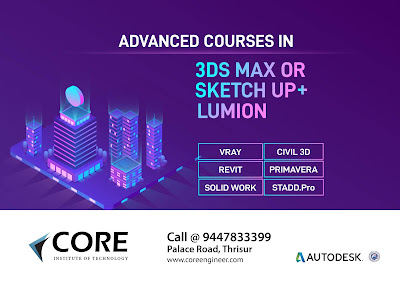GREAT RENDERS FROM LUMION
Lumion is intuitive and the functionality is easy
to apply but what do you want to communicate artistically and how do you
achieve that in Lumion?
Building an artistically compelling still image or
animation in Lumion requires a vision of what you want to achieve: What
emotions do you want to convey? Are you going for light & colorful, grey
& bleak or something else? Should the images look realistic or sketchy?
Which parts of the building are you trying to emphasize?
 Here are 5 tips, including extra hints, from
Alexander of the Lumion team. He plays a leading artistic role in creating
Lumion promo videos as well as in programming Lumion. It’s fair to say he has a
special flair for making compelling images and animations.
Here are 5 tips, including extra hints, from
Alexander of the Lumion team. He plays a leading artistic role in creating
Lumion promo videos as well as in programming Lumion. It’s fair to say he has a
special flair for making compelling images and animations.
1. Find the best point (or points) of view in your
scene
·
Still shots should be balanced by at least one
composition rule. There are
many rules you can use but the more the better.
·
The camera height should for much of the time
during an animation, be set at human
eye level. The camera angle shouldn’t be too wide so as to avoid
perspective distortion.
2. Set up the lighting
·
Find the best position for the sun to attract
maximum attention to the parts of the building that you want to highlight. Use the
sun study
effect, if you want to accurately simulate the sun location at a
particular location, time and date.
·
Add Interior and mood lighting,
even if it is a day shot, this communicates in a subtle way that the building
is being used. You can also use volumetric
lighting for extra atmosphere.
·
Balance the shadow brightness
and coloring
depending on situation, in outdoor shadows always a bit more blue.
·
Avoid high contrast in non-important areas
otherwise these high contrast areas can sometimes direct attention to the wrong
points in your design.
3. Make your materials look good
·
Always enable SpeedRay
reflections and put reflection
planes on big flat surfaces.
·
Glossiness
of the floor and ceiling always should be tweaked after applying materials,
more often extra reflectivity is better than less reflectivity.
·
Do not use simple digital colors, like plain green,
red, blue, purple, yellow. It looks ugly and it’s always better to find
natural, more realistic, “flat” colors.
·
Sometimes it is better to replace diffuse texture
with plain color (using top
slider in material editor) and also use bumps but without maximal
intensity.
4. Adding effects
·
Use color
correction, especially the first slider, as it adds dark shadows
where necessary.
·
Add a little bit of chromatic
aberration and a very tiny value of fish-eye
for a small optical imperfection.
·
Add Hyperlight
for still images. When doing this use an intensity higher than 100%.
·
To make the picture a bit ‘flat’ like print on
paper, use the sharpness
effect and put the slider on minimum, sometimes it helps.
·
Depth-of-Field
(DOF) is really useful for narrow camera angles, but better to not use it with
the wide ones.
·
Always put reflection on
water.
5.Extra details - every single shot needs it!
 ·
Furniture, for interiors and exteriors is very
important. Select and add objects from the Lumion object
library. Place some in empty spaces.
·
Furniture, for interiors and exteriors is very
important. Select and add objects from the Lumion object
library. Place some in empty spaces.
·
Cars are good for border areas of a picture. Try to
avoid having cars in the center of the composition.
·
People are important but try to place them such
that they do not dominate the picture. Their faces should not be too visible.
Using silhouettes from the library is a good way to achieve neutrality.
·
Trees and plants are very good for picture borders
and background.
·
The background is super important, even if it’s
blurred, the feeling of a real city or forest adds a lot to the feeling of a
real building. For example birds
can be a nice detail to make the sky look more natural.
·
Try using blurred
clouds (softness slider), or disable cloud completely, clear sky is
very good if you need extra attention on the building itself.







No comments:
Post a Comment